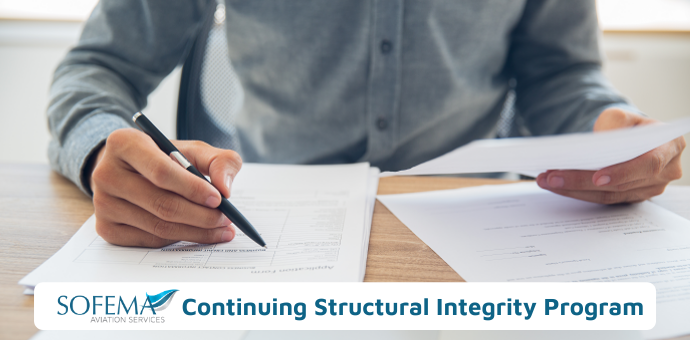- EASA Compliant Structural Integrity Awareness
- Based on Compliance with AMC 20-20
- 1 Day Course Delivered as Classroom or Webinar
- Build Competence with Part CAMO Transitional Staff
- Part CAMO compliant related to CAMO training Objectives – Structural Integrity
AMC 20-20 Continuing Structural Integrity Programme – 1 Day
AMC4 CAMO.A.305(g) Personnel Requirements ED Decision 2020/002/R
Introduction – About this Training
This course is specifically designed to add competence to persons working in an EASA Part CAMO environment.
EASA issued AMC 20-20 to provide guidance to type- certificate holders, STC holders, repair approval holders, maintenance organisations, operators and competent authorities related to:
- Developing a continuing structural integrity programme to ensure safe operation of ageing aircraft throughout their operational life.
- Including provision to preclude Widespread Fatigue Damage.
The course is focused on large aeroplanes, typically operated by Air Carriers (Commercial Air Transport).
Who is the Course for?
All personnel with duties and/or responsibilities in ensuring effective oversight of the Airline Engineering Technical Services and Aircraft Maintenance Program. (AMP) Management, Competent Authority (CA) Quality Assurance Staff. Also of Interest to other persons working in an EASA Part-CAMO Environment or Part M Quality System. Technical Managers & Lease Companies.
What is the Benefit of this Training – What will I learn?
a) At the end of this Training the delegate should have a comprehensive understanding of methodology to ensure compliance with Continuing Structural Integrity Programme.
b) The Roles and responsibilities associated with the management of Supplemental Structural Inspection Programme (SSIP) and relationship with MSG-3.
c) To be able to effectively assess both the regulatory compliance and suitability of operators’ Maintenance Programmes.
d) Achieve a solid understanding related to Part-CAMO Continued Airworthiness Management (CAM) and the Continuing Airworthiness Organisation (CAMO) management of the AMP.
d) Be able to use the regulation to proactively manage the oversight of regulatory compliance related to the AMP and its control processes.
e) Understand the activities which support the analysis of Safety Data including SB’s and AD’s.
f) Understand the impact of the various elements on the AMP with the ability to assess exposure and viability and identify potential weaknesses within the system.
DETAILED CONTENT / TOPICS (the following subjects will be addressed)
– Definitions and Acronyms
– Continuing Structural Integrity – Introduction
– Supplemental Structural Inspection Programme (SSIP)
– Service Bulletin Review and Mandatory Modification Programme
– Corrosion Prevention and Control Programme (CPCP)
– Repair Evaluation Guidelines (REG) and Repair Assessment Programme (RAP)
– Limit of Validity (LOV) of the Maintenance Programme and Evaluation for Widespread Fatigue Damage (WFD)
– Supplemental Type-Certificates and Modifications Implementation
– Appendix 1 – Guidelines for development of a Supplementary Structural Inspection Programme
– Appendix 2 – Guidelines for development of a programme to preclude the occurrence of widespread fatigue damage.
– Appendix 3 -Guidelines for establishing instructions for continued airworthiness of structural repairs and modifications
– Appendix 4 – Guidelines for development of a corrosion control programme
– Appendix 5 – Guidelines for the development of a SB review and mandatory modification programme
Next Steps
Please see this link or email team@sassofia.com to request the training or to receive additional details.
Tags:
Airworthiness Directives, AMP, Service Bulletins, EASA Regulatory Training, EASA regulations, Acceptable Means of Compliance, Part CAMO, SAS training, Webinar training, classroom training, AMC 20-20, Continuing Structural Integrity Programme





